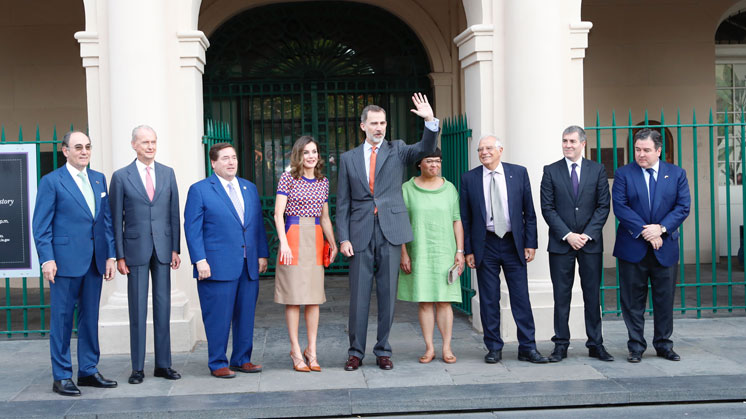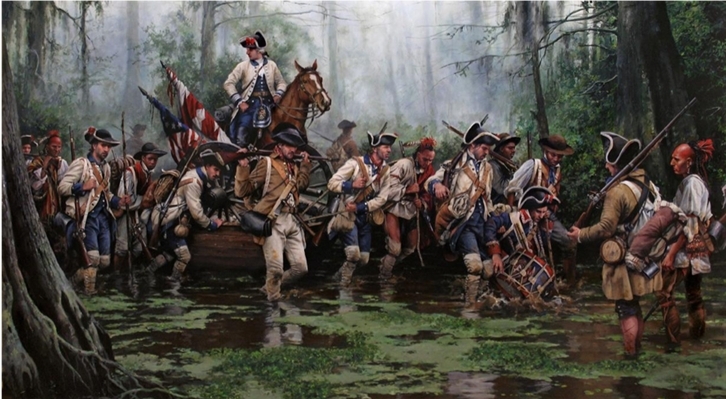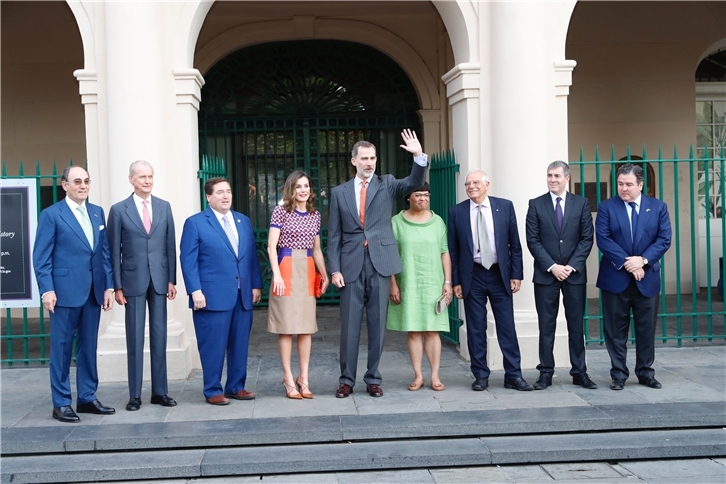'Recovered Memories' exhibition
United States remembers Spain's forgotten hand in American's independence
Bernardo de Gálvez, the governor of Spanish Louisiana and hero of the American War of Independence, now has his own sculpture, donated by Iberdrola, outside the entrance to the Spanish Embassy in the USA.
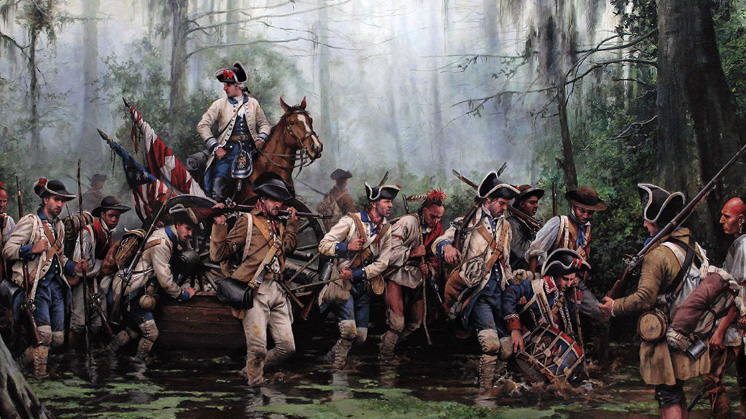
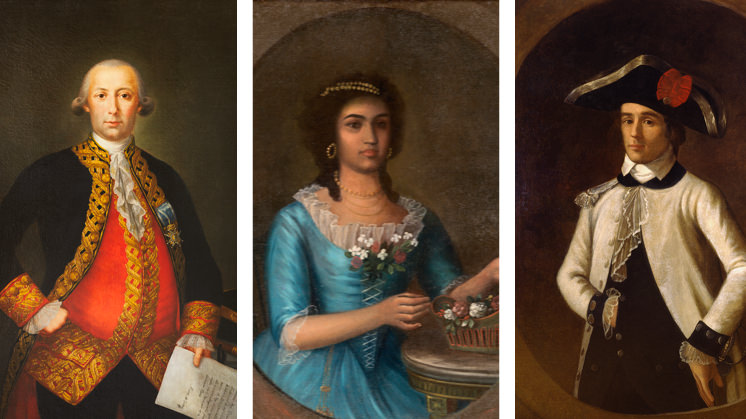

The sculpture was part of the Recovered Memories exhibition held in New Orleans and Washington in 2018, and has been donated to the Spain-USA Foundation by the "Colección Iberdrola".
Being governor of Spanish Louisiana from 1776 to 1782, Bernardo de Gálvez, originally from Málaga, expelled the British from Mississippi and Florida, on the orders of Carlos III, and aided the American rebels with supplies and money. He was then appointed Viceroy of Nueva España (1785-1786). In 2014 he was named an Honorary Citizen of the United States for his contribution during its War of Independence.
'Recovered Memories' exhibition
In the autumn of 2018, Iberdrola group took Recovered Memories. Spain and the Support for the American Revolution to Washington. The exhibition highlighted the significant contribution of the Spanish monarchy to the birth and creation of the United States.
The collection was opened on 26 September, 2018 by the Spanish embassy in the United States and Iberdrola, at an event attended by, among others, the Deputy Chief of Mission of the Spanish Embassy, Cristina Fraile, and the CEO of AVANGRID — the American subsidiary of Iberdrola —, James P. Torgeson. The exhibition remained open to the public until 18 November at the former residence of the ambassadors of Spain, and was visited by more than 20,000 people.
Curated by José Manuel Guerrero, Recovered Memories consisted of a selection of around 100 pieces — including works of art, documents, maps, clothes, holograms, etc. — all of which served to emphasise the relevant role played by the Spanish Crown during the American War of Independence between the years 1775 and 1783.
The most important of these included the painting Gálvez's March. Conquest of Baton Rouge, 1779, by Augusto Ferrer-Dalmau, together with sketches; original portraits of relevant figures from the Spanish colonial period, such as Bernardo de Gálvez, Marianne Celeste Dragon and Ignacio de Balderes — which were the relevant figures from the Spanish colonial period — and the suit worn by Spanish diplomat Diego de Gardoqui.
These pieces were on loan from a variety of museums, archives, libraries and institutions, such as those of Louisiana or Missouri, in the USA, and from the Military, Archaeological, Cultural and Natural Science Museums of Spain. Furthermore, there was a range of unique items loaned by private collections and works from the Iberdrola group art collection External link, opens in new window..
External link, opens in new window..
Four galleries, four topics
The exhibition was structured around four galleries:
- The first focused on discovering what the Spain of Charles III, a power during the Century of Enlightenment, was like, and also on the Spanish footprint in North America.
- The second space illustrated the decisive contribution made by the Spanish towards achieving the independence of the United States.
- The pieces exhibited in the third room examined the second front opened by Spain in the South — Lousiana and Florida — after the declaration of war in 1779 against Great Britain.
- The fourth room, Recovering Memory: Spaniards in the United States, depicted how decades after the United States gained their independence, many Spaniards emigrated to the new country in search of a better way of life. It also included a section dedicated to the birth of electric light.
Exhibition catalogue [PDF] External link, opens in new window.
The exhibition in New Orleans
The exhibition which reached Washington was a follow-on of the exhibition entitled Recovered Memories. Spain, New Orleans and Support for the American Revolution, which was housed in the Cabildo of New Orleans between 21 April and 8 July.
Their majesties King Felipe and Queen Letizia visited the show, accompanied by the Chairman of Iberdrola, Ignacio Galán, and Spain's Minister of Foreign Affairs, Josep Borrell. Furthermore, prominent among the works on display were those by Spanish painters such as Francisco de Goya, with his El Columpio (The Swing) from the Museo del Prado, as well as paintings by Joaquín Sorolla, Luis Paret and Ignacio Zuloaga.
Their majesties the King and Queen of Spain visited the exhibition, accompanied by the Chairman of Iberdrola, Ignacio Galán.
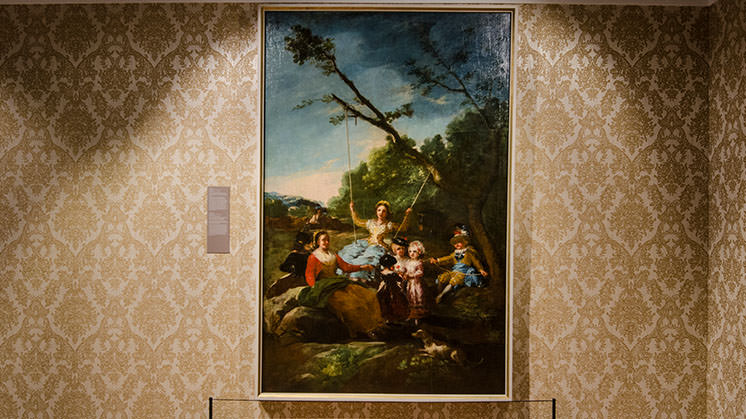
On 5 May 2017, HRM King Felipe visited the exhibition 'La memoria recobrada', located in the Iberdrola Tower, where it was presented for the first time.
'Unveiling memories': Recovering a shared story
After the success of the exhibition, Iberdrola has now set itself the ambitious goal of leaving a permanent legacy of Spain's and the Latinos' and Hispanos' contribution to American independence, trying to make room for Bernardo de Gálvez and his contemporaries in US history museums. This has given rise to the Unveiling Memories External link, opens in new window. project, which includes various initiatives on both sides of the Atlantic, such as exhibitions and other actions in museums and private and official institutions, publications, commemorations, digital resources, support for training, teaching and research, and collaboration with the media.
External link, opens in new window. project, which includes various initiatives on both sides of the Atlantic, such as exhibitions and other actions in museums and private and official institutions, publications, commemorations, digital resources, support for training, teaching and research, and collaboration with the media.
The book Unveiling Memories: Spain and the Hispanic contribution to American Independence — together with the website of the same name — is part of this project. Through 38 articles written by 11 authors specialising in the subject under the direction of José Manuel Guerrero Acosta, the volume offers a summary of the Hispanic contribution to the independence and birth of the United States of America. With a bilingual edition (in Spanish and English) and its fine illustrations, the book is akin to the explanatory panels generally seen in museums and invites us to take a tour of historical events along a detailed time line, to meet the players and discover the marks that have remained on the main stages of these events.
'Bajo dos banderas', a book inspired by the exhibition
Bajo dos banderas (Under two flags) is composed of 12 stories that tell different episodes of Spain in the War of Independence of the United States. The work, edited by Zenda and coordinated by the writer Arturo Pérez-Reverte, has brought together a dozen of the most important writers of the Spanish literary scene of today, Juan Eslava Galán, Espido Freire, Agustín Fernández Mallo, Susana Fortes, Luz Gabás, Juan Gómez -Jurado, Emilio Lara, Cristina López Barrio, José María Merino, Arturo Pérez-Reverte, Clara Sánchez and Lorenzo Silva.
Julián Martínez-Simancas, Iberdrola Board of Directors secretary (left), Espido Freire and Arturo Pérez-Reverte went to the presentation of 'Bajo dos Banderas' in Madrid (Spain). Video voice transcription (Spanish version) [PDF] External link, opens in new window.
"The stories by the eminent authors who accompany the reader on this journey invite us to remember Spain's vital role in key episodes"
These authors drew their inspiration from the exhibition Recovered Memories. Spain and Support for the American Revolution. Besides, the cover of the book is a fragment of the work The March of Gálvez, a painting by Augusto Ferrer-Dalmau which is part of that exhibition.
The book, sponsored by Iberdrola, has a prologue written by Ignacio Galán, the company's chairman, who says that "the stories by the eminent authors who accompany the reader on this journey invite us to remember Spain's vital role in episodes that, while pivotal, are largely unknown."
This compendium of stories, which have already been published on the Zenda website, are not on sale in bookshops. The electronic version is available free of charge. Printed copies of the book will be given out as prizes in literary competitions and prize draws organised on this digital platform for readers and writers.
Iberdrola, committed to the dissemination of art and culture
Organising this exhibition is further proof of Iberdrola's contribution to fostering knowledge on both sides of the Atlantic about a historic event that is still less well-known than it deserves to be among the general public. It is also an opportunity to remind us of the important role played by some of Spain's key figures in the definition of the young American nation. In this sense, this exhibition is a continuation of a previous display that our company organised in May 2017 at its headquarters in Bilbao titled La memoria recobrada. Huellas en la historia de los Estados Unidos.
Recovered Memories. Spain and Support for the American Revolution reaffirms our company's commitment towards the promotion and dissemination of both art and culture. It also emphasises Iberdrola's close links with the United States, where the Iberdrola group has successfully consolidated itself as one of the leading companies in the energy sector and promotes cultural activities focused on art and history that highlight the close relationship between both countries.
Highlights
-

'Unveiling Memories'
External link, opens in new window. -

'Memory regained'
External link, opens in new window. -

'Bernardo de Gálvez'
External link, opens in new window. -

Women soldiers
External link, opens in new window. -

The origin of the dollar
External link, opens in new window. -

Jai Alai in USA
External link, opens in new window.





